यहाँ दर्शाये गये परिपथ में E1=E2=E3=2 वोल्ट तथा R1=R2=4Ω है। A एवं B के बीच E2 बैटरी गुजरने वाली धारा है : -
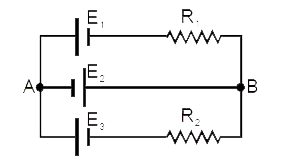
0
2 एम्पियर A से B की ओर
2 एम्पियर B से A की ओर
उपर्युक्त में से कोई नहीं
The correct Answer is:B
Step by step video & image solution for यहाँ दर्शाये गये परिपथ में E_1 = E_2 = E_3 = 2 वोल्ट तथा R_1= R_2 =4 Omega है। A एवं B के बीच E_2 बैटरी गुजरने वाली धारा है : - by Physics experts to help you in doubts & scoring excellent marks in Class 12 exams.
Updated on:21/07/2023Topper's Solved these Questions
- धारा वैद्युतिकीBOOK - ALLEN HINDICHAPTER - धारा वैद्युतिकीEXERCISE - EXERCISE-IV Assertion & Reason
22 Videos
- धारा वैद्युतिकीBOOK - ALLEN HINDICHAPTER - धारा वैद्युतिकीEXERCISE - EXERCISE-II Previous Year Questions
50 Videos
- द्रव्यमान केन्द्र तथा संघट्टBOOK - ALLEN HINDICHAPTER - द्रव्यमान केन्द्र तथा संघट्टEXERCISE - EXERCISE IV (ASSERTION AND REASON) TARGET AIIMS
14 Videos
- धारिता BOOK - ALLEN HINDICHAPTER - धारिता EXERCISE - EXERCISE -IV
12 Videos
Similar Questions
कथन : धारावाही तार के अन्दर विद्युत क्षेत्र शून्य होता है।
कारण : तार में कुल आवेश अशून्य होता है।
View Solutionदर्शाये परिपथ में यदि एक चालक तार को बिन्दु A व B के मध्य जोड़ दिया जाए तो इस तार में धारा :-
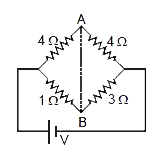
View Solutionप्रक्कथन : दो कणों के निकाय का द्रव्यमान-केंन्द्र दोनों कणोको जोड़ने वाली रेखा पर स्थित होता है, तथा भारी कण के समीप होता है।
कारण किसी कण के द्रव्यमान तथा द्रव्यमान केंद्र से इसकी दूरी का गुणनफल दूसरे कण के द्रव्यमान तथा द्रव्यमान केंद्र की दूरी के गुणनफल के आंकिक मान के बराबर होता है।
View Solutionकथन : किसी संधारित्र के प्लेटों पर आवेश बढ़ाने का अर्थ है उसकी धारिता को बनाया। कारण : क्योंकि Q=CV→Q∝C
View SolutionIn the circuit in figure E_1=3V, E_2=2V, E_3=1V and R=r_1-r_2-r_3=1Omega a. Find the potential differece between the points A and B and the currents through each branch. b. If r_2 is short circuited and the point A is connected to point B , find the currents through E_1,E_2, E_3 and the resistor R
View SolutionIn the following circuit ,E1=4V,R1=2Ω,
E2=6V,R2=2Oemga,andR3=4Ω. Find the currents i1andi2

View SolutionIn the circuit shown in fig. 5.265, E_1 = E_2 = E_3 = 2V and R_1 = R_2 = 4Omega. The current flowing between points A and B through battery E_2 is
View SolutionFor the batteries shown in fig. R1,R2andR3 are the internal resistance of E1,E2,andE3, respectively Then, which of the following is / are correct?
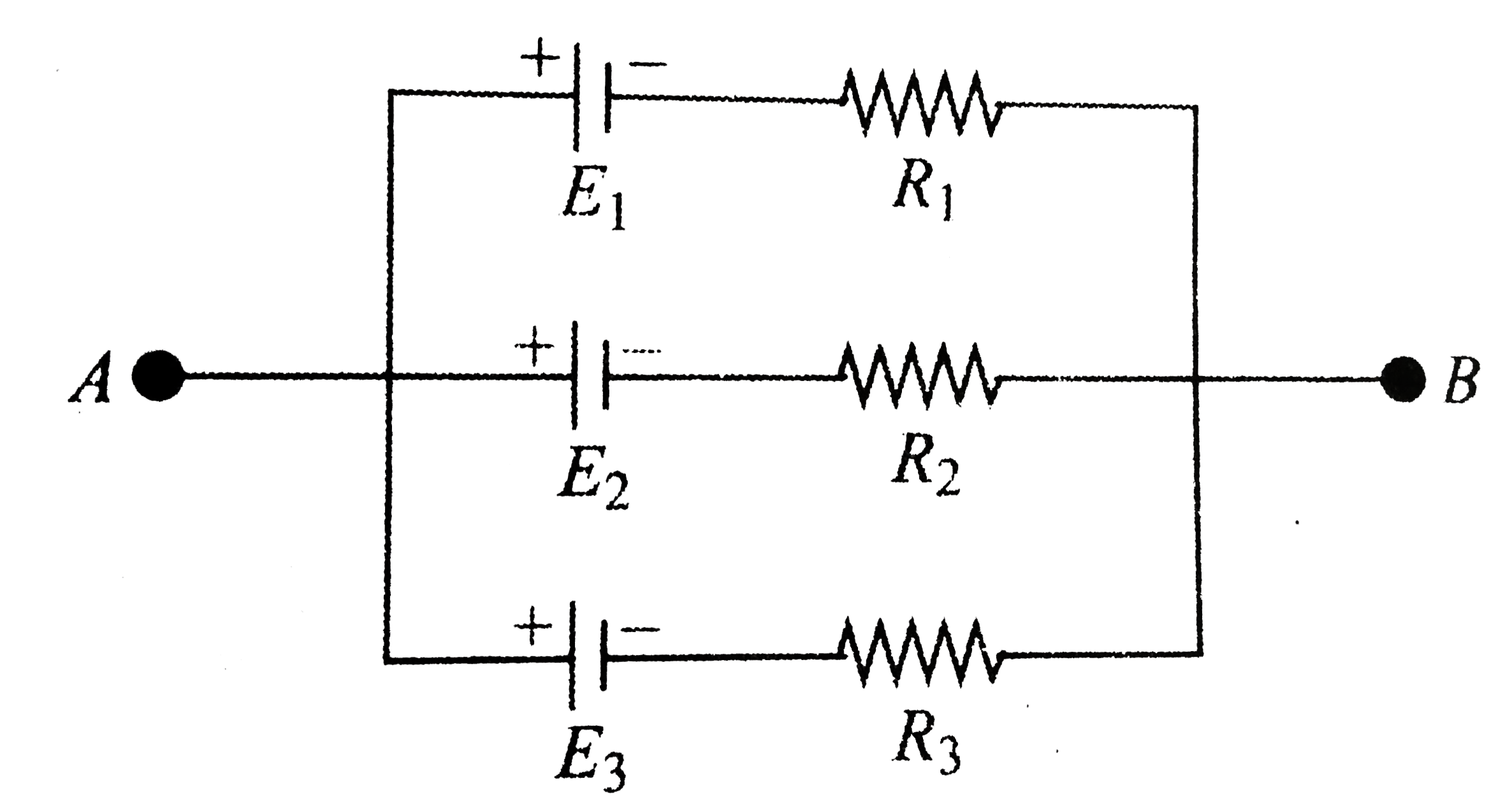
View SolutionStatement -1 : Let E1,E2,E3 be three events such that P(E1)+P(E2)+P(E3)=1, then E1,E2,E3 are exhaustive events.
Statement-2 if the events E1,E2 and E3 be exhaustive events, then P(E1∪E2∪E3)=1
View SolutionFor the circuit shown, with R1=1.0Ω,R2=2.0Ω,E1=2VandE2=E3=4V the potential difference between the points ‘a’ and ‘b’ is __________(in V)
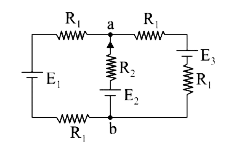
View Solutionयदि इलेक्ट्रॉन E1 ऊर्जा वाली कक्षा से E2 ऊर्जा वाली कक्षा में जाता है, तो उत्सर्जित ऊर्जा की तरंगदैर्घ्य का समीकरण दीजिए।
View SolutionE1,E2 are events of a sample sapce such that P(E1) =1/4 , P(E2∣E1)=1/2,P(E1∣E2)=1/4. Then P(E1∣E2)+P(E1∣¯¯¯¯E2)=
View SolutionFor the circuit shown, with R1=1.0Ω, R2=2.0Ω, E1=2V and E2=E3=4V the potential difference between the points 'a' and 'b' is approximately (in V):
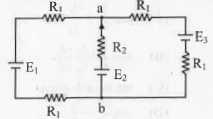
View SolutionIn a given network of ideal cells and resistors, R_1 = 1.0Omega, R_2 = 2.0 Omega, E_1 = 2 V And E_2 = E_3 = 4 V is. What is the difference between point a and b?
View SolutionIn the circuit shown in fig. 5.265, E1=E2=E3=2V and R1=R2=4Ω. The current flowing between points A and B through battery E2 is
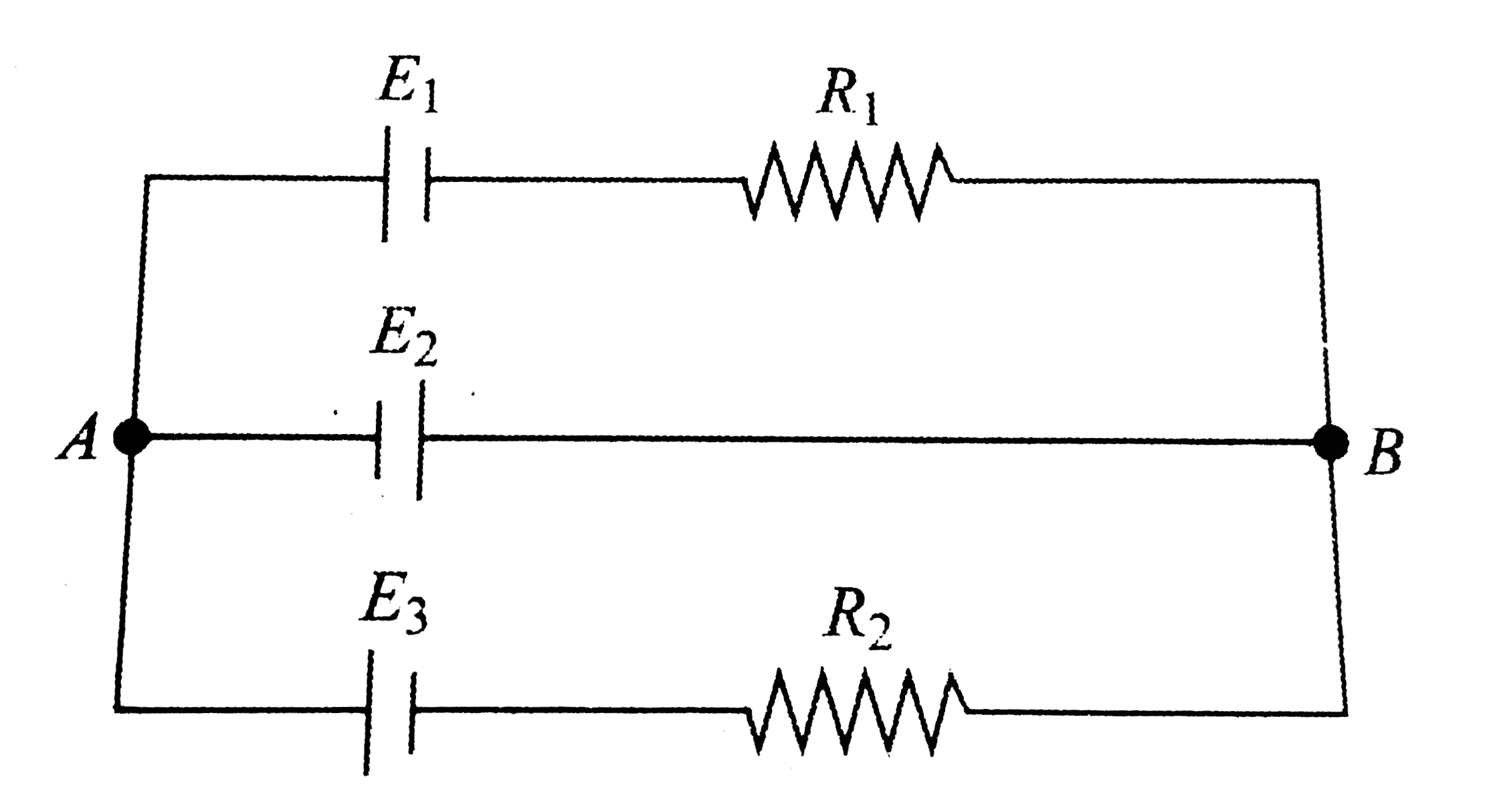
View Solution
